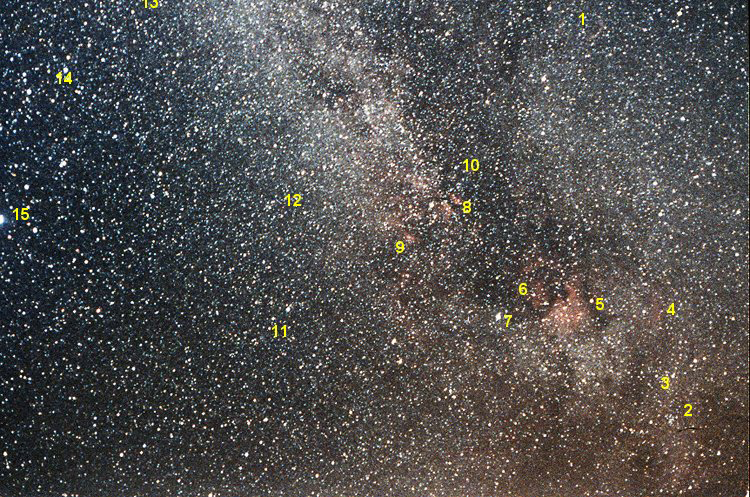
30 minutes exposure on Konica 400 film. 50mm f/2.0 Nikkormat camera.

Situated low on the northern horizon during winter lies the constellation of Cygnus. As the constellation encloses a rich portion of the Milky Way, Cygnus abounds with interesting objects of all kinds.
Ajoining Cygnus to the west is the small but beautiful constellation, Lyra, dominated by the second brightest star in the northern sky, Vega. Lyra also contains many interesting deep-sky objects.
A number of the deep-sky objects are indicated on the photograph below and listed table.
This general region would be the northern hemisphere equivalent to the Vela-Carina region for southern observers, although not as rich.
| Number | Name | R.A. | Dec | |
| 1 |
NGC 6960
NGC6974 NGC 6992 NGC6995 |
20 51 | +31 | Veil Nebula |
| 2 | NGC 7092 | 21 32.2 | 48 26 | M 39 |
| 3 | NGC 7082 | 21 29.4 | 47 05 | |
| 4 | NGC 7000 | 20 58.8 | 44 20 | North America Nebula |
| 5 | IC 5070 | 20 55.9 | 47 25 | Pelican Nebula |
| 6 | Deneb | 20 41.4 | 45 17 | |
| 7 | NGC 6910 | 20 23.1 | 40 47 | |
| 8 | IC 1318 | 20 26 | 40 30 | Gamma cygni complex |
| 9 | NGC 6913 | 20 23.9 | 38 32 | M 29 |
| 10 | NGC 6811 | 19 36.9 | 46 23 | |
| 11 | NGC 6819 | 19 41.3 | 40 11 | |
| 12 | NGC 6779 | 19 16.6 | 30 11 | M 56 |
| 13 | NGC 6720 | 18 53.6 | 33 02 | M 57 Ring Nebula |
| 14 | Vega | 18 36.9 | 38 47 |
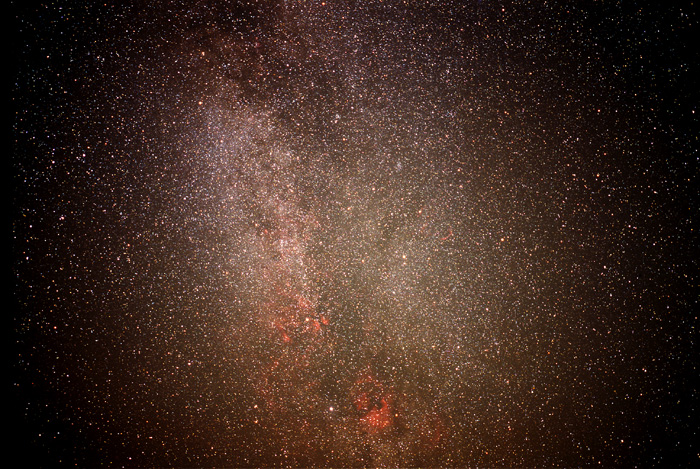
30 minutes exposure on Agfa 400 film. 100mm f/2.8 Pentax wide-format camera.
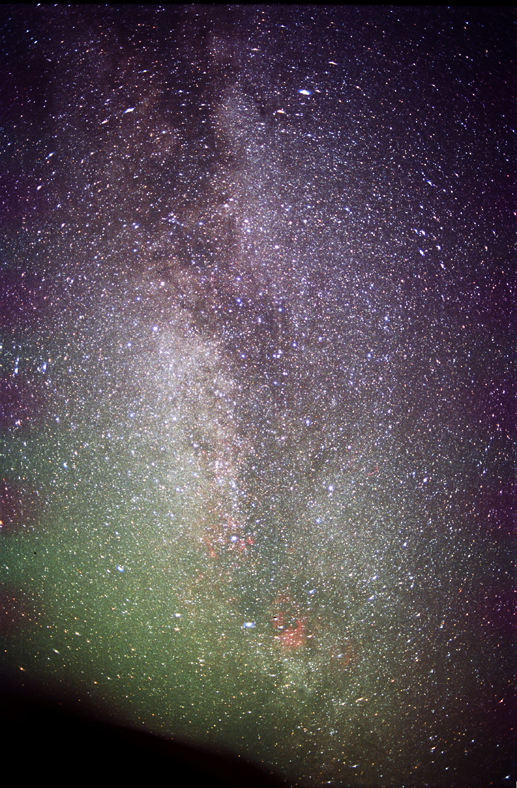
30 minutes exposure on Agfa HDC 400 film. 28mm f/3.5 Canon lens.
This wide-angle photograph follows the Milky Way from just south of Altair (near the top of the image) to the northern horizon, a little north of Deneb. It was taken when Cygnus was at its maximum altitude from where I lived in Western Australia.
This photograph has Vega near the top left-hand edge and Deneb a little below centre.
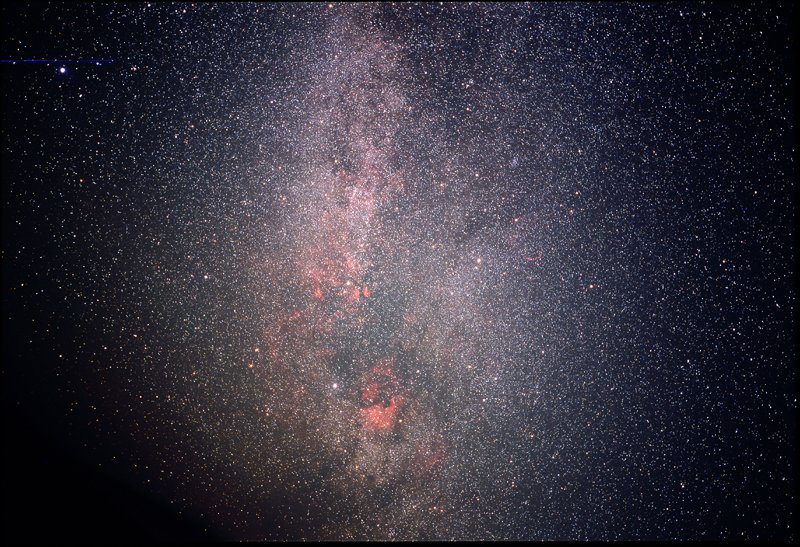
30 minutes exposure using wide format Fuji Super G 400 film. 120mm f/2.8 Minolta lens.
After moving to the USA, I was able to observe Cygnus at the zenith. Unfortunately the skies were nowhere near as dark and so the Milky Way in this area was still not very impressive. Still, the photography of the constellation was easier!
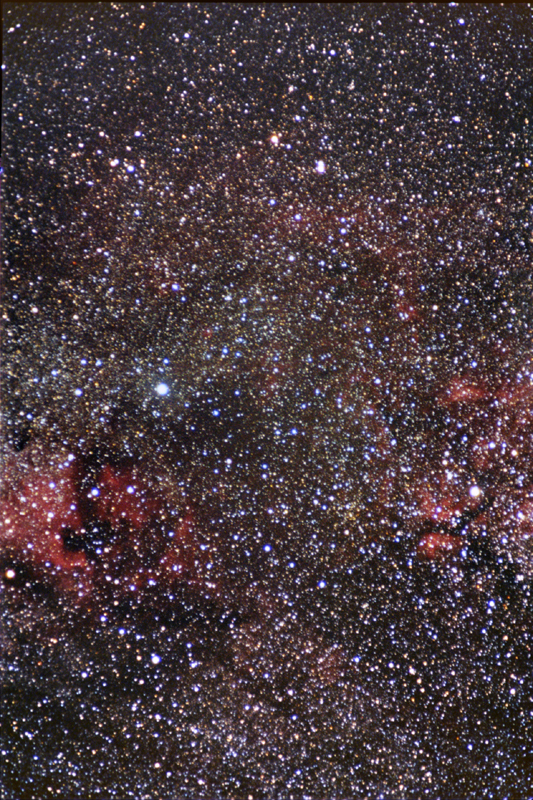
30 minutes exposure, Kodak Ektachrome 200 slide film. 135mm f/3.5 Tamron lens.
The northern and central regions of Cygnus. The bright white star is Deneb. To the left of it is NGC 7000 the North American Nebula, while to the right is gamma cygni and the IC 1318 emission nebula complex.
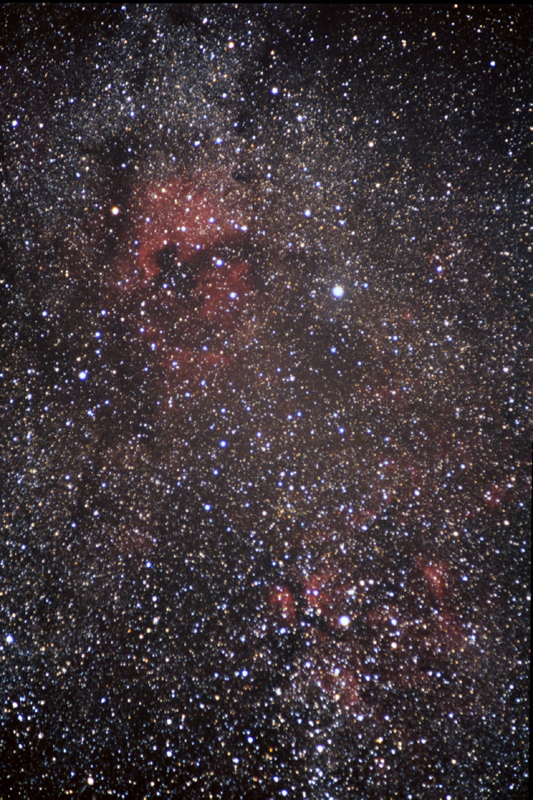
30 minutes exposure, Kodak Ektachrome 200 slide film. 135mm f/3.5 Tamron lens.
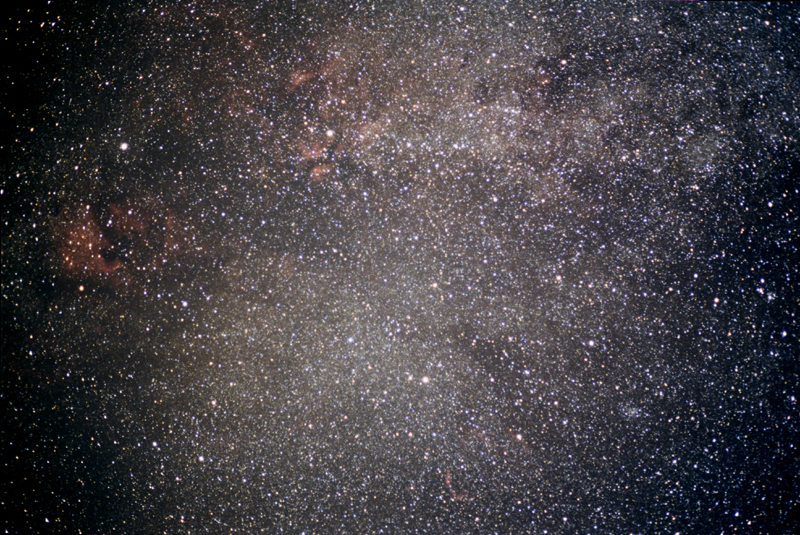
45 minutes exposure, Kodak Ektachrome 200 slide film. 85mm f/2 Canon lens.
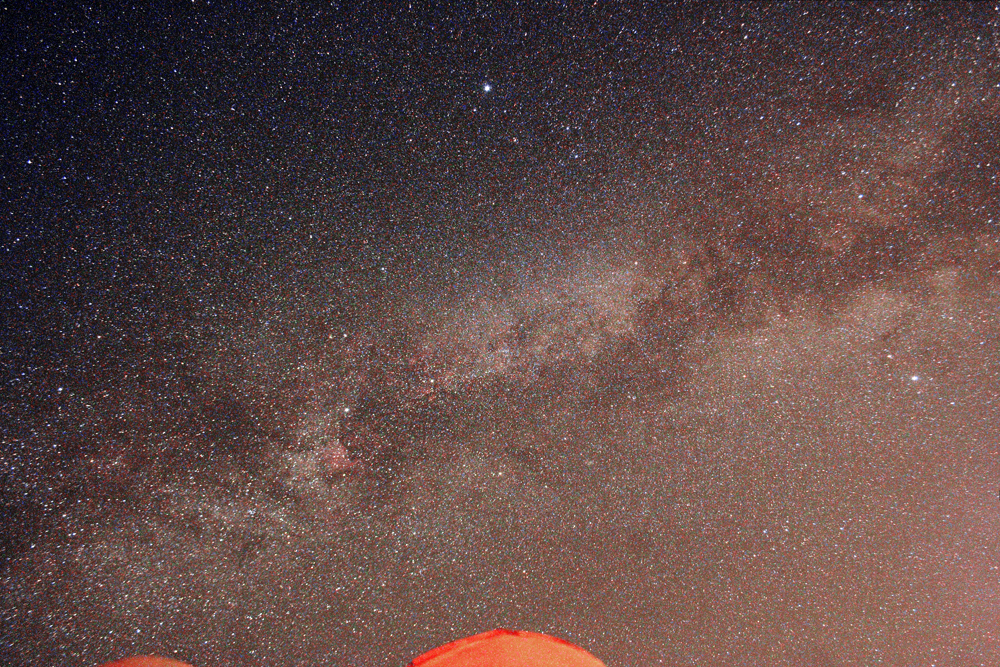
3 minutes exposure. Canon 350D DSLR camera 55mm f/5.6 lens.
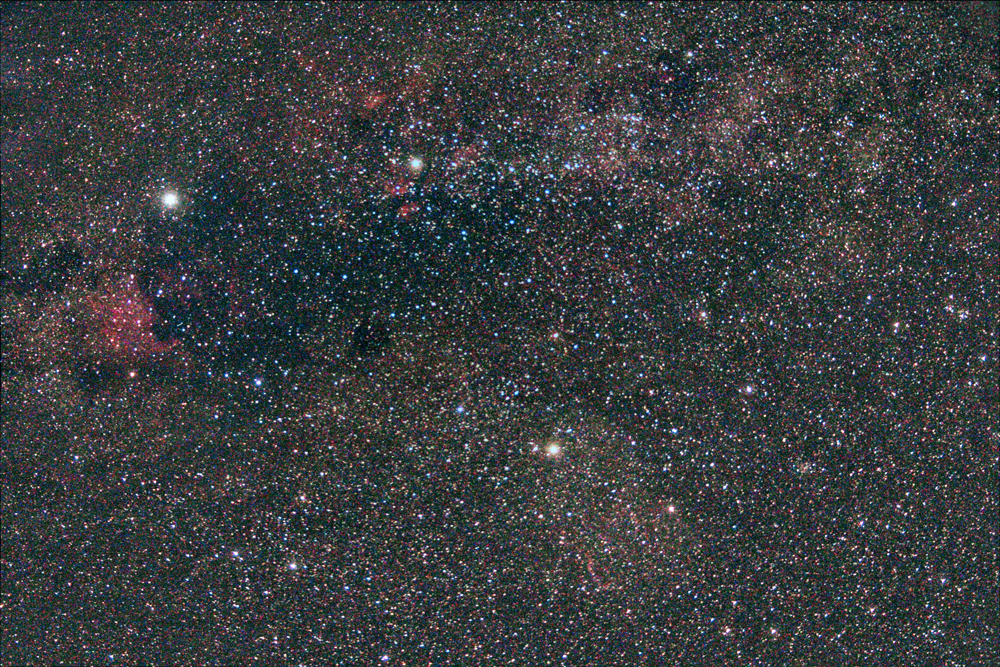
2 minutes exposure. Canon 350D DSLR camera 55mm f/5.6 lens.
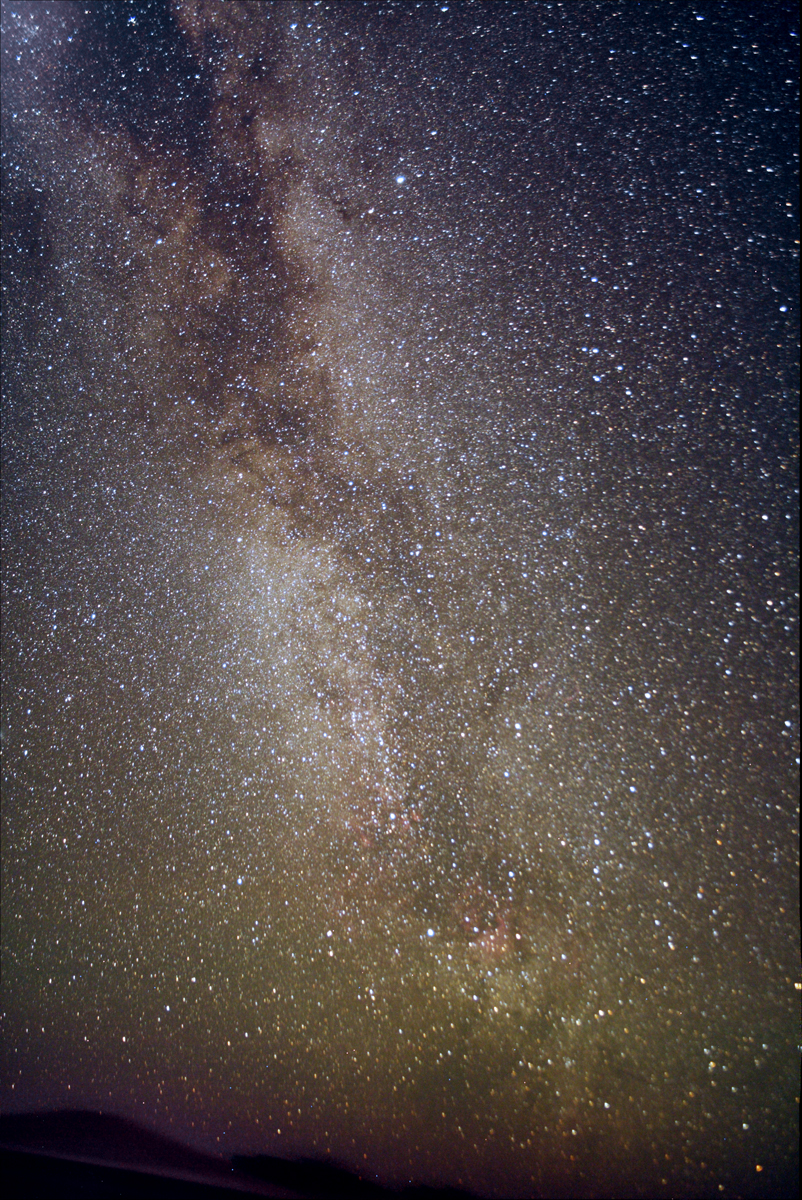
2 minutes exposure. Canon 350D DSLR camera 18mm f/3.5 lens.